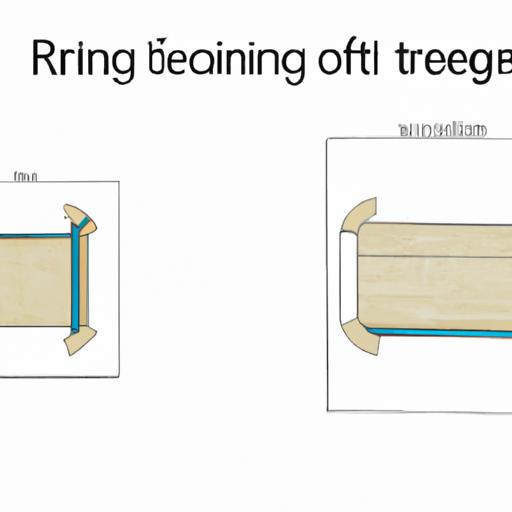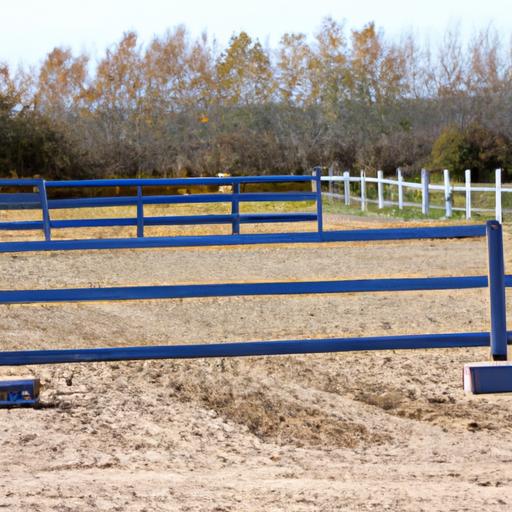Discover the importance of horse training ring size. Learn ideal dimensions, common mistakes to avoid, and how it impacts your equine training.
As a horse enthusiast, have you ever wondered how the size of a training ring can impact the success of your horse training activities? Well, let’s embark on an exciting journey to explore the significance of horse training ring size and how it can make a difference in your equine training endeavors.
Overview of Horse Training Ring Requirements
When it comes to horse training, the training ring plays a crucial role in creating a safe and conducive environment for both horses and riders. It provides a dedicated space where essential training exercises can be conducted, promoting discipline-specific skills development. However, it’s not just about having a ring – it’s about having the right ring size.
Significance of Choosing the Right Ring Size
Choosing the appropriate size for your horse training ring is of utmost importance. It directly influences the effectiveness of training sessions, the safety of both horse and rider, and overall training outcomes. A well-sized training ring ensures sufficient space for horses to move freely, perform exercises comfortably, and develop the required skills without any limitations.
By selecting the right ring size, you can optimize the training experience and prevent potential hazards that may arise from inadequate space. Imagine trying to teach your horse intricate dressage movements in a cramped or undersized ring. It would be like fitting a majestic steed into a tiny shoebox – hardly ideal for their natural movements and development!
To truly unlock the potential of your training sessions, it’s essential to assess various factors when determining the horse training ring size. Consider the availability of space, the purpose of the ring, the number of horses to be trained, and the types of exercises and training activities you intend to engage in.
In the next sections, we will delve deeper into each of these factors, exploring how they influence the ideal dimensions for horse training rings. Get ready to discover the optimal ring size for dressage, jumping, western riding, and other equestrian activities. So, let’s saddle up and embark on this enlightening journey together!
Factors to Consider for Horse Training Ring Size

When determining the size of your horse training ring, it’s crucial to take several factors into consideration. By carefully assessing these aspects, you can ensure that the ring size aligns with your training objectives and provides an optimal environment for both horses and riders. Let’s explore the key factors that should guide your decision-making process.
A. Space Availability
The amount of space you have available plays a significant role in determining the size of your horse training ring. Consider the dimensions of your property and the area designated for training purposes. Adequate space allows for comfortable movement and maneuverability, reducing the risk of accidents and promoting a more productive training experience. Assess the available space and allocate enough room for the ring to accommodate the desired activities without feeling cramped.
B. Purpose of the Ring
The purpose of your horse training ring will influence its size requirements. Are you primarily focused on dressage, jumping, or western riding? Different disciplines often have specific recommendations for ring sizes to ensure proper execution of exercises. Research the guidelines provided by reputable equestrian organizations to determine the ideal dimensions for your chosen discipline. Tailoring the ring size to your specific goals will enhance the training experience and facilitate skill development.
C. Number of Horses to be Trained
Consider the number of horses you plan to train in the ring simultaneously. If you have multiple horses, it’s essential to provide ample space to avoid overcrowding and potential collisions. Each horse should have sufficient room to perform exercises comfortably without interfering with others. Taking into account the number of horses involved will help you determine the appropriate size to accommodate all equine participants safely.
D. Types of Exercises and Training Activities
The types of exercises and training activities you intend to conduct play a vital role in determining the size of your training ring. Different exercises may require more or less space, depending on their complexity and the movements involved. For example, dressage exercises often involve intricate footwork and lateral movements, necessitating a larger ring size. On the other hand, jumping exercises may require a wider ring to allow horses to approach the jumps at optimal angles. Consider the specific needs of your training activities to ensure that the ring size supports the desired exercises effectively.
By carefully considering these factors – space availability, purpose of the ring, number of horses to be trained, and types of exercises and training activities – you can make an informed decision when determining the size of your horse training ring. Taking the time to assess these aspects will contribute to a safer, more efficient, and ultimately more successful training experience for both you and your equine companions. Now, let’s move on to the next section, where we will explore the ideal dimensions for horse training rings based on these considerations.
Benefits of Appropriate Horse Training Ring Size
As we continue our exploration of horse training ring size, it’s important to understand the numerous benefits that come with choosing the right dimensions for your training ring. Let’s delve into the advantages that an appropriately sized ring can offer to both horses and riders.
A. Safety for Horses and Riders
One of the primary benefits of an adequately sized horse training ring is enhanced safety. With ample space to maneuver, horses can perform their exercises without feeling confined or restricted. This reduces the likelihood of accidents, collisions, or injuries to both horse and rider. A spacious training ring allows horses to stretch their legs, execute movements with precision, and maintain their balance, creating a secure environment for training sessions.
B. Enhanced Training Experience
When horses have enough room to move freely within the training ring, their training experience is greatly enhanced. They can execute exercises more effectively, allowing trainers to focus on refining their movements and techniques. The absence of space limitations fosters a positive learning environment where horses can develop their skills and abilities to their fullest potential.
C. Improved Performance and Development
Appropriate ring size directly impacts the performance and development of horses. With sufficient space, horses can engage in a wider range of training exercises, promoting muscle development, flexibility, and coordination. Whether it’s practicing dressage movements, jumping over obstacles, or executing intricate maneuvers in western riding, having the right ring size ensures that horses can perform at their best, leading to improved overall performance and progress.
D. Reduced Risk of Injuries
Inadequate space in a training ring can pose a significant risk of injuries to both horses and riders. Limited room for movement can result in accidental collisions, falls, or entanglements. By providing a spacious environment, the risk of such incidents is greatly reduced, ensuring the safety and well-being of all involved. A properly sized training ring allows horses to navigate their exercises comfortably, minimizing the chances of strain, stress, or accidents that can hinder their progress.
By understanding and appreciating the benefits of selecting the appropriate horse training ring size, you can create an optimal environment for training sessions. Now that we’ve explored the advantages, let’s continue our journey and learn about common mistakes to avoid when determining the ideal dimensions for your horse training ring.
Conclusion
Choosing the right horse training ring size is paramount to the success of your equine training endeavors. The size of the training ring directly impacts the effectiveness of training sessions, the safety of both horse and rider, and the overall training outcomes. By understanding the importance of appropriate ring size, you can create an environment that fosters growth, development, and success for both horse and rider.
Throughout this article, we have explored the significance of horse training ring size and the factors to consider when determining the ideal dimensions. We have discussed the importance of length and width considerations, as well as the requirements for circumference and diameter. Additionally, we have highlighted the recommended measurements for various disciplines such as dressage, jumping, western riding, and other equestrian activities.
However, it’s crucial to be aware of common mistakes that can occur when determining horse training ring size. Insufficient space allocation can limit the freedom of movement for horses and hinder their training progress. Lack of knowledge about discipline-specific requirements may lead to inadequate ring dimensions for specific training activities. Overcrowding the ring can create a chaotic and unsafe environment, while ignoring safety guidelines can put both horse and rider at risk.
In conclusion, selecting the right horse training ring size is a key aspect of creating a safe, conducive, and effective training environment. By considering the factors discussed and avoiding common mistakes, you can optimize your training sessions and enhance the development of your horses. Remember, at Horsemasterypro.com, we are dedicated to helping you achieve optimal training results through proper ring dimensions. So, go ahead and take the reins of success by choosing the perfect ring size for your equine training needs.


